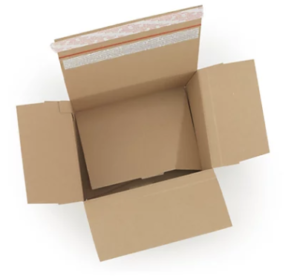While e-tailers do everything possible to satisfy their customers, returns are still part of the life of an online shop. They should not be seen as a negative aspect of selling on the internet. Therefore, e-commerce companies often enclose a return voucher with their packages to facilitate the return.
For e-commerce, it is essential to write a clear returns policy to deliver the necessary information to the consumer. Done well, it represents a selling point. So how exactly does this work in terms of return slips?
What does the law say about return vouchers?
The e-commerce returns policy appears in the website’s Terms and Conditions. It must be compliant with regulations and inform the customer about the conditions of return.
The legal framework around the returns process
The returns process is framed by law. For purchases made remotely, the loi Hamon specifies that the customer has a 14-day withdrawal periodfrom the day of receipt of order. When this period is respected, the e-tailer has no possibility to refuse the return.
Unless otherwise specified by the e-merchant, the return costs in the event of a withdrawal are to be borne by the buyer. Refunds of purchases must be made within a maximum of 14 days after receipt.
Why you need a returns policy
Providing consumers with a simple returns procedure is a real asset for e-commerce. Indeed, 76% of internet users would check the return conditions of their purchases before checking out, according to a survey conducted by UPS. More than 1 in 2 buyers would cancel the order when these terms are unclear, or not convenient for them.
It is therefore essential to write your returns policy as well as possible and offer flexible returns conditions to optimise customer satisfaction.
Writing your returns policy
Essential to your e-commerce strategy, your returns policy must be written in the right way. Here are some tips to follow to make it clear and effective:
- Draft concise, transparent and understandable Terms and Conditions of Sale;
- Indicate the withdrawal period available to customers: the legal minimum is therefore 14 days, but it is entirely possible (and recommended) to extend this period in order to optimise customer satisfaction;
- Ask customers to indicate the reason for the return, with the aim of improving your services;
- Communicate about the conditions of return, i.e. the conditions of reimbursement, the assumption of return costs, or the tracing of the package;
- Talk about the possibility of changing its return conditions, and non-returnable products.
Want to know more about this? Find out, in detail, the 5 key points for writing an effective e-commerce returns policy.
Steps to manage your returns
In France, the return rate for products sold in e-commerce is said to be 39%, according to a Statista Global Consumer Survey. It is therefore important to optimise the management of customer returns. This involves a number of steps:
- Understand the customer’s return and expectations: for this, you can, for example, set up an online questionnaire or a survey to establish the reasons for the return.
- Estimate upstream the financial impact of a return: in particular, you must take into account the cost of the return journey of the parcel to the company, the treatment of the product at the after-sales service, and the possible re-delivery to the customer.
- Build on an appropriate shipping strategy: identify each return with a number to track its logistical journey; detail the steps in your processing procedures; set up an alert system to inform customers of the progress of the returns procedure.
- Set performance indicators : how many returns do you have per week or month; how long does it take to process a return; what are the main reasons for returns, etc.
- Preventing customer returns: when you are aware of the reasons for returns, it is easier to prevent them from happening again. Also, to help you, rely on your performance indicators.
Choose reusable packaging for your returns
Reusable packaging is designed to be used more than once, by the company or by customers. In the e-commerce sector, such packaging can be particularly interesting, especially to be part of a greener reverse logistics strategy. Reusable packaging offers several benefits for your business:
- They participate in improving your imageby responding to the environmental concerns of consumers: more and more of them are paying attention to the steps taken by companies to help the planet.
- They decrease your carbon footprint, especially in the event of a customer return, who can then reuse the shipping packaging.
- They ensure optimal return of the package, as they are designed to offer the best protection to the shipped product.
There are different types of reusable packaging. For your e-commerce logistics, you can consider using:

A returnable case : it has a second adhesive strip specially thought out for returning products in case of exchange. |
 One shipping-pocket-going-return : designed with 2 layers of kraft and featuring 2 adhesive strips, it’s ideal for shipping and returning products easily. One shipping-pocket-going-return : designed with 2 layers of kraft and featuring 2 adhesive strips, it’s ideal for shipping and returning products easily. |
Do you want to implement an eco-friendly packaging strategy? RAJA tells you a little more about reusable packaging in an article dedicated to the topic.
Customer satisfaction is more than ever at the heart of the concerns of online retailers. Indeed, if the field of e-commerce is growing in recent years, consumers are increasingly demanding about the quality of services. Thus, it is important to set up well-functioning logistics, and this obviously includes the returns process.














